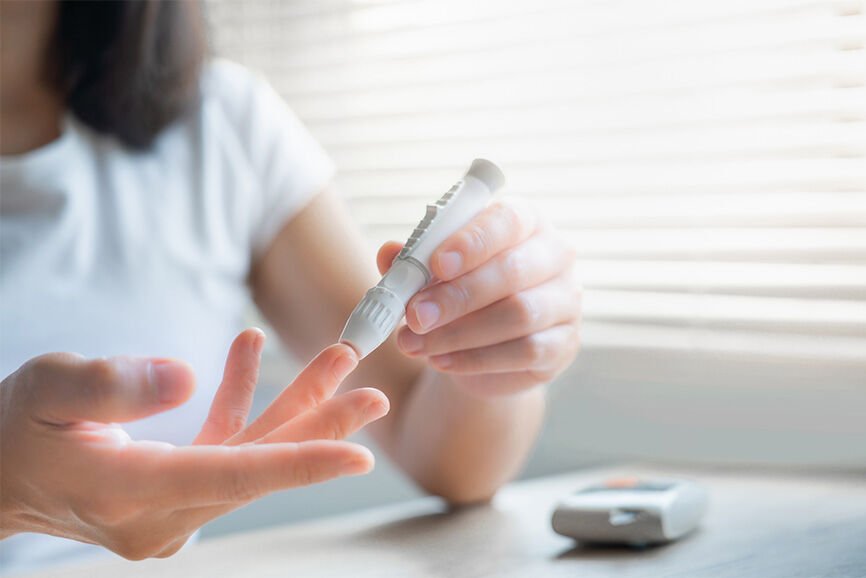Health & Wellbeing
World Diabetes Day
November 01, 2022

November 14th is World Diabetes Day, bringing diabetes to the forefront. The theme for 2021-2023 is “Access to Diabetes Care” - calling on policymakers to increase access to education for those who are affected or have loved ones that are affected by diabetes.
Globally, 537 million people (1 in 10) are living with diabetes which is expected to rise to 643 million by 2030. While diabetes can have lasting effects, the good news is that with proper treatment and management it doesn’t have to stop you from living well day-to day.
We share important information on what diabetes is the symptoms and the overall outlook.
What is Diabetes?
Diabetes is a chronic disease that occurs when the pancreas is no longer able to make insulin, or the body cannot make effective use of the insulin it creates. When this happens, this results in an increase in glucose levels in the blood. If this is not managed, over time it can result in damage to the body and organ failure.
There are two types of Diabetes – Type 1 and Type 2. Type 1 cannot be prevented but can be managed through medication, diet, and exercise while Type 2 (the most common) can most times be prevented.
Type 1 Diabetes is an auto-immune condition, and generally occurs in childhood. It is a result of the body “attacking” cells that make insulin, meaning the body either does not produce or produces too little insulin. You are more likely to develop Type 1 if you have a family history, however you can also have Type 1 Diabetes without their being a family link. Type 1 Diabetes is diagnosed by a blood test.
Type 2 Diabetes is the most diagnosed type, and for many people (not all) can be prevented through lifestyle choices. Once a person has Type 2 Diabetes it cannot be cured and relies on management. Type 2 Diabetes occurs when the body does not make enough insulin, or cells in the body do not recognise the presence of insulin. This results in the body being unable to keep blood glucose levels normal. Type 2 Diabetes is typically diagnosed in adulthood (age 30-40 years). Having a history of high blood pressure, being overweight, European over the age of 40 or Māori, Asian, Middle Eastern or Pacific over the age of 30 are most at risk or likely to develop Type 2 Diabetes, along with a family history. Type 2 Diabetes is diagnosed by a blood test.
What are the symptoms?
Type 1 Diabetes often presents as:
- Excessive thirst
- Passing of more urine
- Weight-loss
- Fatigue
You can also experience abdominal pains, nausea, skin infections, extreme hunger, and poor concentration.
Type 2 Diabetes commonly presents as:
- Fatigued and lacking energy
- Thirsty
- Going to the toilet often
- Poor eyesight or blurred vision
- Frequent infections
- Hunger
The important thing to note with Type 2 Diabetes is that you may not always have symptoms, and people can have Type 2 Diabetes without knowing. If you feel unwell, it is best to speak with your Healthcare provider to rule out any other conditions.
What is the outlook?
While there is no cure for Diabetes, the good news is that it can be managed, and the outlook is largely dependent on how well you manage your blood glucose level. While it can be very stressful and anxiety-inducing receiving a diagnosis, proper lifestyle choices such as diet and physical exercise and where appropriate, medication can help you to manage your Diabetes.
For those with Type 1 Diabetes, management is largely focussed around managing blood glucose levels with Insulin with diet and physical activity also playing a role. People who have been diagnosed with Type 1 Diabetes can and do live long, active, and healthy lives. Research continues to help find a cure for Type 1 Diabetes.
Management of Type 2 Diabetes often focuses on changes to lifestyle, including diet and activity. With effective management, your blood glucose levels can return within a normal range, however this does not mean you are cured. Sometimes medication will also be used to help control your Diabetes, and often those with Type 2 Diabetes at some point will require insulin as Type 2 Diabetes is a progressive condition meaning overtime your body will produce less insulin. Untreated Diabetes can lead to un-wanted and in some cases damaging health issues, so it is important to ensure you have a plan in place to actively manage and control your Diabetes.
The above information is designed as a guide only and is not designed to replace professional advice. Please consult with your healthcare professional to ensure that you receive the most appropriate information and care for your needs.
Are you managing Diabetes? Shop our range of Diabetes Care products here
Sources:
https://worlddiabetesday.org/about/facts-figures/
https://www.diabetes.org.nz/living-well-with-diabetes
https://my.clevelandclinic.org/health/diseases/21501-type-2-diabetes#outlook--prognosis
https://www.diabetes.org.nz/understand-type-2-diabetes
https://www.diabetes.org.nz/type1diabetes


